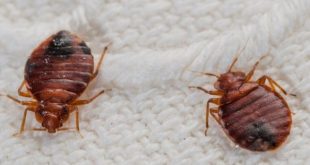Termites are often referred to as the “silent destroyers” because of their ability to inflict severe damage to your home without immediate detection. These pests can compromise the structural integrity of your property, leading to costly repairs if left untreated. When you discover termite damage, it’s crucial to enlist the help of a skilled termite damage repair contractor. This guide will walk you through what to look for in a contractor, the repair process, and tips for ensuring your home is termite-free in the future.
The Right Termite Damage Repair Contractor
Selecting the right contractor is crucial for ensuring that repairs are done correctly and efficiently. Here are key factors to consider:
Experience and Expertise: Look for contractors with extensive experience in termite damage repair. They should be knowledgeable about different types of termites and their specific damage patterns.
Licensing and Certification: Ensure the contractor holds the necessary licenses and certifications. This indicates that they meet industry standards and are qualified to perform the required repairs.
References and Reviews: Check for references and online reviews from previous clients. Positive feedback and successful case studies can give you confidence in the contractor’s abilities.
Insurance: Verify that the contractor has adequate insurance coverage. This protects you from potential liabilities and ensures that any accidental damage during the repair process is covered.
Detailed Estimates: Obtain detailed written estimates from multiple contractors. This helps you compare costs and understand the scope of work involved.
Warranty and Aftercare: Inquire about warranties or guarantees for the repairs. A reputable contractor should offer a warranty to cover any issues that arise after the repair.
Understanding Termite Damage
Termite damage can manifest in various ways, including:
Wood Damage: Termites feed on wood, leading to hollowed-out timbers, sagging floors, or soft, crumbling wood. The damage may be visible on floors, walls, and ceilings.
Structural Issues: Beyond wood damage, termites can compromise the structural integrity of your home. This includes weakening beams, joists, and support structures.
Dry Rot: Sometimes, termites’ presence can exacerbate issues with dry rot, a condition where wood becomes brittle and weak due to fungal growth.
Swarming Evidence: If you notice discarded wings or small, pinhole-sized holes in wooden structures, it may be a sign of a termite infestation.
Choosing a Termite Damage Repair Contractor
Selecting a competent termite damage repair contractor is crucial for ensuring effective repairs and prevention of future infestations. Here’s what you should consider:
Certification and Licensing: Ensure the contractor is licensed and certified to perform termite damage repairs. This not only guarantees they meet industry standards but also provides you with legal recourse should something go wrong.
Experience and Specialization: Look for contractors with extensive experience in termite damage repair. Specialized knowledge in handling termite-infested structures will result in better repair outcomes.
Insurance: A reputable contractor should have insurance to cover any potential damage that may occur during the repair process. This protects both you and the contractor from unexpected financial burdens.
References and Reviews: Check for customer reviews and ask for references. Speaking with previous clients can give you insights into the contractor’s reliability, quality of work, and customer service.
Detailed Estimates: Obtain detailed written estimates from several contractors. This should include a breakdown of labor, materials, and any additional costs. Be wary of estimates that seem unusually low or high compared to others.
Warranty: Inquire about warranties on repairs. A good contractor will offer a warranty on their work, providing peace of mind that any issues discovered after the repair will be addressed.
The Termite Damage Repair Process
Once you’ve selected a contractor, understanding the repair process can help you prepare and ensure everything goes smoothly:
Inspection: The first step is a thorough inspection of the property. The contractor will assess the extent of the damage, identify the type of termites involved, and determine the best course of action.
Treatment: If termites are still present, the contractor will implement a treatment plan to eradicate them. This may involve chemical treatments, bait systems, or a combination of methods.
Repair: After the infestation is dealt with, the contractor will begin the repair process. This includes replacing damaged wood, reinforcing structures, and addressing any secondary issues like dry rot.
Prevention: A reputable contractor will also offer solutions to prevent future infestations. This may involve moisture control, installing barriers, and regular inspections.
Final Inspection: Once repairs are completed, a final inspection ensures that the damage has been fully addressed and that the home is structurally sound.
Tips for Preventing Future Termite Infestations
Prevention is key to avoiding repeat infestations and protecting your home from further damage. Here are some tips:
Maintain Moisture Levels: Termites are attracted to moisture. Ensure that gutters are clear, downspouts direct water away from the foundation, and that there are no leaks in your plumbing.
Seal Entry Points: Inspect your home for cracks or gaps in the foundation, walls, or around pipes. Seal these entry points to prevent termites from gaining access.
Proper Ventilation: Ensure proper ventilation in crawl spaces and basements to keep these areas dry and less attractive to termites.
Regular Inspections: Schedule regular inspections with a pest control professional. Early detection of termite activity can prevent significant damage.
Wood Maintenance: Treat wooden structures with termite-resistant chemicals and ensure that wood is not in direct contact with soil.
Conclusion
Dealing with termite damage can be a stressful experience, but choosing the right termite damage repair contractor can make the process much smoother. By focusing on certification, experience, insurance, and thorough communication, you can find a contractor who will effectively address your home’s needs and prevent future issues.
Remember, the repair process involves not just fixing the damage but also ensuring that termites don’t return. With proper repair and preventive measures, you can protect your home from the destructive power of termites and maintain its structural integrity for years to come.
 Daily Blogger News Stay updated with the latest trends and insights. Your reliable source for daily updates and information.
Daily Blogger News Stay updated with the latest trends and insights. Your reliable source for daily updates and information.







